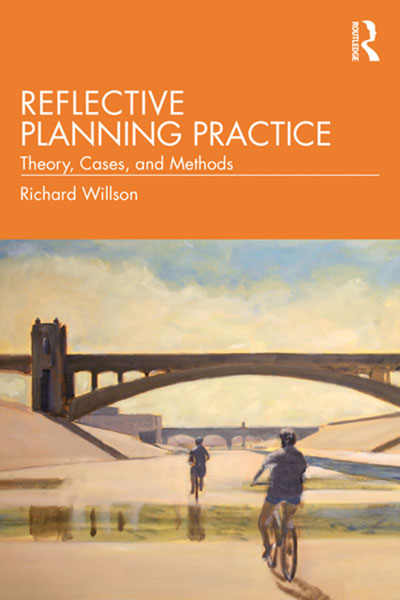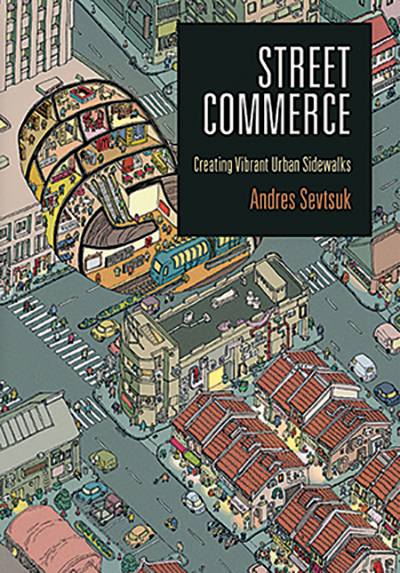Jan. 1, 2021
Revealing the artistry of planning practice
"Planning does not allow for a straightforward application of technique — it requires practical judgments about how to proceed, what knowledge to employ, and whose interests to serve," writes the author, introducing a series of extraordinarily frank and detailed accounts of how planning works in professional life.

Reflective Planning Practice: Theory, Cases, and Methods by Richard Willson, FAICP, of California State Polytechnic University, Pomona (2021, Routledge, 343 pp.; $39.95 paper, $35.99 e-book), highlights seven "planning episodes" which together take up more than half of the book: climate action at Cal Poly Pomona; resilience in Mamallapuram, India; inclusionary housing policies in Portland, Oregon; form-based code in Miami; parking management in Dana Point, California; fresh produce in Detroit; and a mixed-use project in Hawthorne, California.
These episodes highlight reflection and rethinking, essential in a profession that rarely allows for "a straightforward application of technique."
At Cal Poly Pomona, a Climate Action Plan begun in 2008 sought to steer the university toward carbon neutrality. That goal was not met, for a variety of reasons, including the lack of continuing implementation support. Willson (who was in the thick of it) resists the temptation to write off the effort: new seeds have since sprung up. "Planners do not give up, even when it is clear that their efforts are insufficient."
Lisa K. Bates (Portland State University) worked with the Portland Plan (2012), the community-based coalition Anti-Displacement Portland, and many other interests. "Invention was at the core of this planning episode: moving racial justice from broad plan language to implementation commitments." Again, the outcome was at best ambiguous.
This book should provoke reflection and reassessment (as opposed to giving up and moving on) among both students and seasoned practitioners. Read more in Willson's APA Blog post, "Reflective Planning: Navigating Idealism and Realism."

Right of Way: Race, Class, and the Silent Epidemic of Pedestrian Deaths in America
By Angie Schmitt; 2020; Island Press; 228 pages; $28 paper, $12.99 e-book
The author, formerly with Streetsblog, seeks to stigmatize murder by automobile.
She would emulate the relatively successful campaign against drunk driving, and work to highlight the increasing numbers of pedestrians "killed while walking" by automobiles.
In 2018, she notes, pedestrian deaths nationwide rose to their highest level (6,283) since the mid-1990s. And they are not evenly distributed: in 2014, pedestrian deaths by automobile were twice as likely to occur in less prosperous neighborhoods (defined as those where median per capita income was under $21,000) than they were in more prosperous ones (where people earned more than $31,000 per capita).
Schmitt's opening scene puts the focus on planning for traffic alone: North 43rd Avenue on the northwest side of Phoenix, Arizona, with no crosswalks, no traffic light, "just six lanes of roaring, indifferent traffic."
Her concluding scene is Nashville, Tennessee, where groups like Walk Bike Nashville may be nudging the city toward at least a few pedestrian safety improvements.
It's not easy. In 2014, the group highlighted the 50 most dangerous corridors in Davidson County. After four years, "only four locations had seen any real pedestrian safety improvements."

Street Commerce: Creating Vibrant Urban Sidewalks
By Andres Sevtsuk (MIT); 2020; University of Pennsylvania Press; 240 pages; cloth $39.95
"The current generation of planning professionals has been trained to think that retail and service projects belong to the realm of the private sector." In this succinct but thorough book, Sevtsuk argues that planners need inclusionary retail policies, not just inclusionary housing policies, in order "to ensure that urban amenities are available for everyone's benefit" without having to drive for miles.
The author's close-up analysis of various retail situations leads to several conclusions: (1) There is no single prescription for improving street commerce, but almost all situations require conscious planning and strategy. (2) Public investment in street retail engenders more benefits than other infrastructure investments. (3) Cities of all sizes and situations "should invest in streets in historically marginalized neighborhoods, but also ensure that low-income communities of color can stay and benefit from these improvements."
And finally, such improvements shouldn't be held hostage by the market. "It is the job of municipal governments, planners, and community groups to work with, push back against, and negotiate with developers ... to incentivize street commerce that offers greater collective benefits than the car-oriented suburban mall has so far." This encouraging and well-argued book demands reading and rereading.




